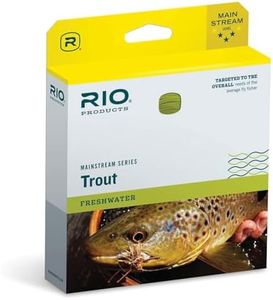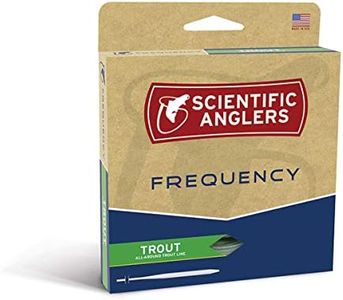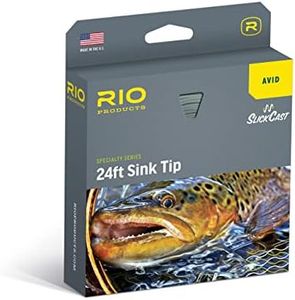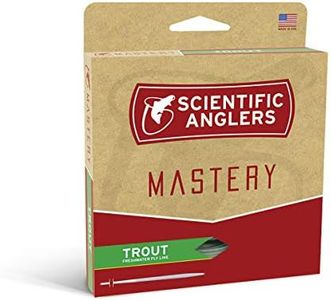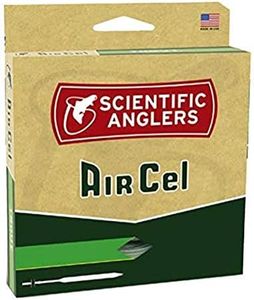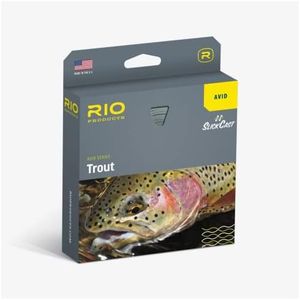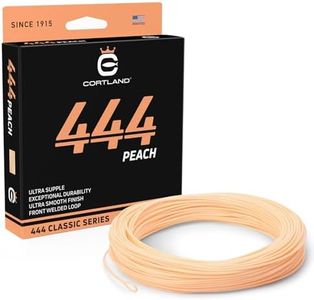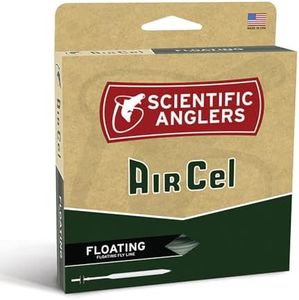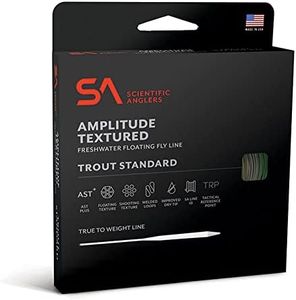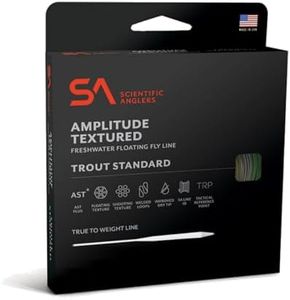We Use CookiesWe use cookies to enhance the security, performance,
functionality and for analytical and promotional activities. By continuing to browse this site you
are agreeing to our privacy policy
10 Best Trout Fly Lines
From leading brands and best sellers available on the web.Buying Guide for the Best Trout Fly Lines
Choosing the right trout fly line is important because it directly affects your casting, presentation, and overall fishing success. The right line will match your rod, the conditions you'll fish in, and the fly sizes you plan to use. Understanding the different specifications allows you to select a fly line that makes your time on the water more enjoyable and productive.Line WeightLine weight refers to the thickness and mass of the fly line, and it's usually rated on a scale from 1 to 12. This is crucial because your line weight should match your rod, as rods are designed to cast specific weight lines. Lighter line weights (1-3) are best for small streams and delicate presentations with tiny flies, while medium weights (4-6) are the all-rounders suitable for most trout fishing situations. Heavier weights (7 and up) are typically used for larger rivers, windy conditions, or when casting big flies. Match the line weight to both your rod rating and the typical fishing conditions you'll encounter.
Line TaperThe taper of a fly line describes how the line’s thickness changes along its length. Common types are weight-forward, double taper, and level line. Weight-forward lines have most of the weight near the front, making them good for longer casts and wind. Double taper lines offer delicate presentations and are great for short to medium distances, making them a favorite for small streams. Level lines are less common and provide little assistance in casting. Consider your casting style, distance needs, and preference for presentation when choosing a taper: weight-forward for longer casts or wind, double taper for delicate work and easier roll casts.
Line DensityLine density determines whether a fly line floats, sinks slowly, or sinks rapidly. Floating lines are the most popular for trout fishing since most presentations occur near the surface. Sink-tip and full-sinking lines are useful if you need to get your fly deeper, such as in lakes or fast, deep streams. Think about where the fish are feeding: use a floating line for dry flies and surface action, or a sinking line to reach fish holding deep.
LengthMost fly lines are 80 to 100 feet in length. A standard length suits nearly all trout fishing situations, offering enough line for most casts and practical handling. Unless you have a unique requirement, such as competition fishing or very short/long rods, the regular length will work well.
ColorFly line color can affect both your ability to see the line and how visible it is to fish. Bright colors are easy for you to track in the air and on water, which can help with casting and line control. Subdued colors blend better for wary trout in clear water. Choose a highly visible line if line management is a priority and spooking fish is less of a concern, or go for a subtle color in crystal-clear, heavily fished waters.
